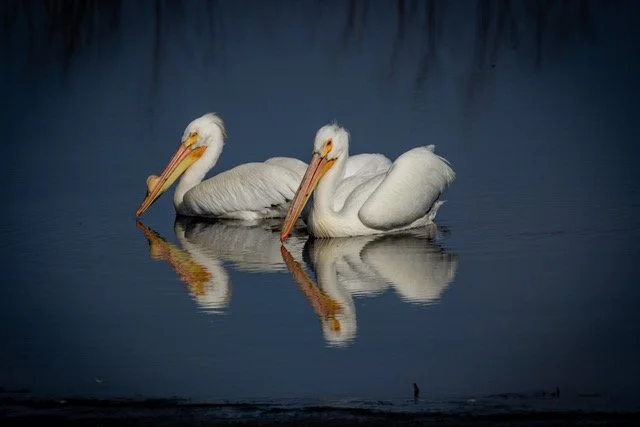Often underappreciated because it is so common, the Mallard is present throughout the Northern Hemisphere and known by sight by millions of people.
Photo of the Month: October
Count Birds at Home for the CBC
Count Birds at Home for the CBC
The Christmas Bird Count (CBC) Feeder Watch program is the fast-growing part of the annual Christmas Bird Count. Thousands of people watch birds in their yards and at their feeders and now they are joining to count birds for the CBC.
We invite you to join them and count birds for this year’s CBC on Saturday, December 20.
By volunteering to count birds in your yard whether you have a feeder or not, you will contribute to the science of tracking the birds in our community and we need the data.
Registration for the CBC Feeder Watch Program is open and will close on December 13. To register, first you must check if you living within the CBC Count Circle. This is a 15-mile radius centered on Beaver Lake in Sammamish. You can check if you (or a friend!) live within the counter circle using this interactive map.
HERE IS WHAT TO DO
During a two-hour period when you know birds will be present at your feeders, watch and count which birds visit your backyard. We will provide a tally sheet and further instructions. All you need to do is spot and identify birds! Once you have the bird totals you send the tally sheet back to us and we do the rest, and we add your bird totals to the birds the field teams find as they scour parks and the lakeshore for birds during the day. It’s easy and it’s fun and your data is important.
If you have any questions or would like further information on the Feeder Watch program, contact CBC compiler Andy McCormick at amccormick@eastsideaudubon.org
Please visit our CBC page to learn more about being a Feeder Watcher or joining a Field Team!
Green Tip of the Month
Glaucous-winged Gull
Christmas Bird Count – December 20, 2025
Every December, thousands of volunteers across North America head outdoors to count birds — helping scientists understand how our feathered neighbors are doing. The Audubon Christmas Bird Count (CBC) isn’t just a fun birding day — it’s the oldest and largest citizen science project in the world, and it depends entirely on volunteers like you.
Photo of the Month: September
Photo of the Month: August
Lights Out, Community In: Taking Action for Migratory Birds in Redmond
Lighting can attract large numbers of night-migrating birds. Birds drawn into lights often become entrapped and circle the lit area, which can deplete their energy stores needed for migration and put them more at risk of colliding with buildings and infrastructure. Every year in the U.S., nearly 1 billion birds die from building collisions, most of them migratory species traveling at night. But here’s the hopeful part: when communities step in with science-based solutions, the results are dramatic.
Warbling Vireo Gets an Update
Birdability Week
Join us in October as Eastside Audubon hosts two accessible and inclusive bird outings inspired by Birdability during Birdability Week from October 20-26, 2025, a weeklong effort to support the commitment to make birding accessible to everybody.
Hooded Merganser
Eastside Audubon Board Member to Speak at National Ornithology Symposium
Eastside Audubon Youth Board member Song Han Ngo will be in the spotlight this fall as a Student Keynote Speaker at the Frontiers in Ornithology Student Symposium in Seattle on October 4, 2025.
2024 Helen Engle Award
Every year, the National Audubon Society’s Washington State office, known as “Audubon Washington”. A big part of the agenda is the awarding of the Helen Engle Volunteer of the Year Award. This award was inspired by Helen Engle who was honored with a Lifetime Achievement award during the 2013 National Audubon Convention.




















